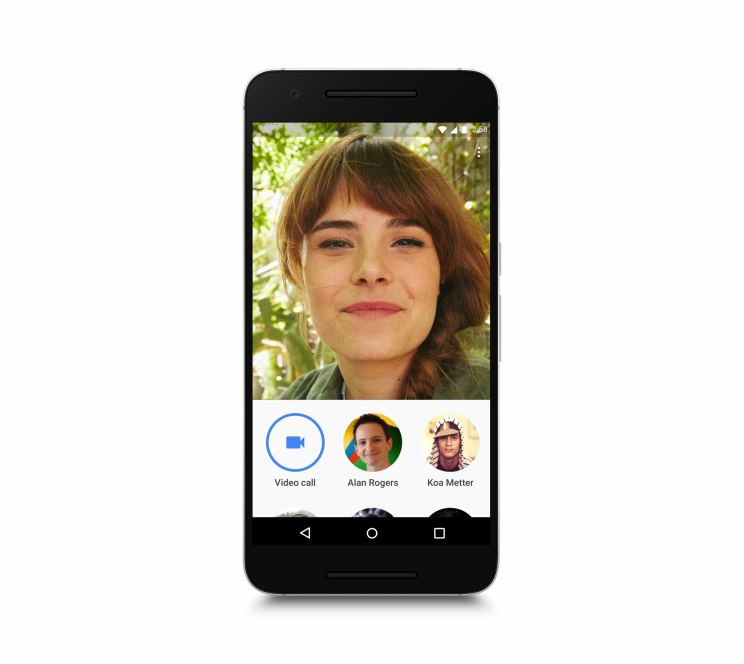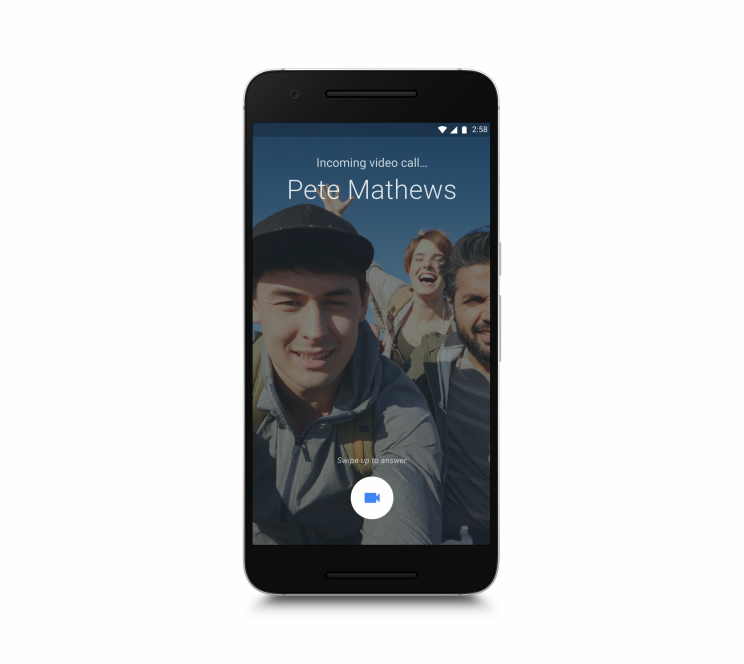With new Duo app, Google wants to make video chatting more human
I almost never use video calling apps unless it’s for a work meeting or to talk to a friend in another state. Beyond that, I generally feel like getting them to work properly is more work and worry than it’s worth. But Google wants to change that kind of thinking with its new Duo video-calling app.
Available Tuesday for both Android and iOS, Duo is Google’s attempt at making video calling apps more personal. To accomplish that, the company specifically designed the app for one-to-one mobile calling. Yep, there’s no desktop calling with Duo. If you want to talk, you’ve got to be on your phone.
Part of what makes Duo unique among video calling apps, at least as Google tells it, is its simplicity. When you’re in a call, all you see is an end call button, a button to mute yourself and a button to switch from your phone’s front-facing camera to the rear camera.

“The north star was to make the app super, super simple,” explained Google’s VP of communications products Nick Fox. “We stripped out all of the complexity, making it simple and making it just work.”
Like Facebook’s super popular WhatsApp, Duo requires you to use your smartphone’s phone number to create an account. When you first install the app, you’ll receive a text message sent to the phone number with which you want to use the Duo.
From there, the app will scour your phone’s contact list for other users who’ve registered with the app and add them to your Duo contact list. If you want to talk to someone via Duo, but don’t have his or her number saved in your contact list, you can just enter their cell number and call.
The standout feature of Duo is Knock Knock, a kind of virtual peephole that lets you see who’s calling and what they’re doing before you pick up. As long as the person you’re calling has you saved as a contact, the first thing they’ll see before even answering your call is a live video of you. If they aren’t saved as your contact, you can’t see them.

Oh, and it’s important to note that the person calling never sees your face until they pick up. So you don’t have to worry about someone sneaking a peak at you without your knowing.
“What’s neat about this,” Fox said, “is that the person that’s calling starts making faces and jumping up and down to get the receiver’s attention. And because they see this, the first moment of the call is a happy warm moment.”
It’s totally true. I called someone who also had Duo installed from my phone and lit up as soon as I saw their face; it was a genuinely happy moment. Of course, I’m sure you’ll get the occasional Knock Knock with someone on the other end looking particularly unhappy, but I guess that’s also part of making the app more human. If you don’t want to use Knock Knock, Duo gives you the option to turn the feature off entirely.
Google’s goal is to make Duo work on as many smartphones as possible on virtually any connection you have available, whether that’s the latest iPhone running on 4G LTE or a $50 phone on a 2G network.
To do that, Fox explained, the app has been designed to scale along with your connection. So if you’re on LTE, you’ll see crisp video and clear sound. When your connection quality drops, though, the video will slowly degrade until it eventually goes blank.
All the while, Fox said, the app’s audio will be maintained. That’s because Duo, despite being a video-calling app, prioritizes audio over video, since it’s easier to pass audio over a congested or unstable network.
So far, the app seems to work well over Wi-Fi and LTE connections. I haven’t had a chance to put it through the wringer on a slow connection, though. I’ve noticed a few video hiccups when establishing a connection over Wi-Fi, but beyond that, everything with the app seems to run smoothly. I was especially impressed with how well Duo managed to move seamlessly between LTE and Wi-Fi networks without any downtime.
Google also wisely chose to set Duo to pause your video feed when you navigate away from the app during a call, which is way better than having to stare at the person on the other end of the line fiddle with their phone as you sit there.
So if Duo is Google’s new consumer video chatting app, then where does that leave the company’s popular Hangouts app? Well, according to Fox, Google will continue to support Hangouts, albeit with a more enterprise-friendly focus. That makes sense as more and more companies, including Yahoo, rely on Hangouts for group video chatting.
Duo, and its upcoming instant message-based partner app Allo, is part of Google’s attempt to get in on the enormous messaging app market currently dominated by apps like the aforementioned WeChat, WhatsApp and Facebook Messenger. With more people joining such services, it makes sense for Google to jump in as well.
Duo is currently rolling out for Android, and iOS and should be available globally in the coming days.
More from Dan:
Email Dan Howley at dhowley@yahoo-inc.com; follow him on Twitter at @DanielHowley.